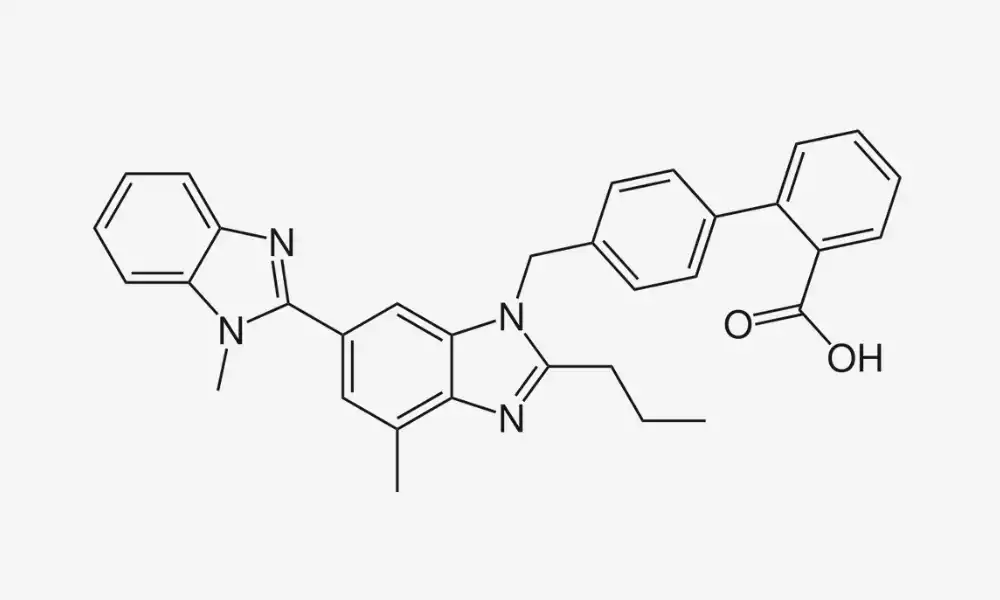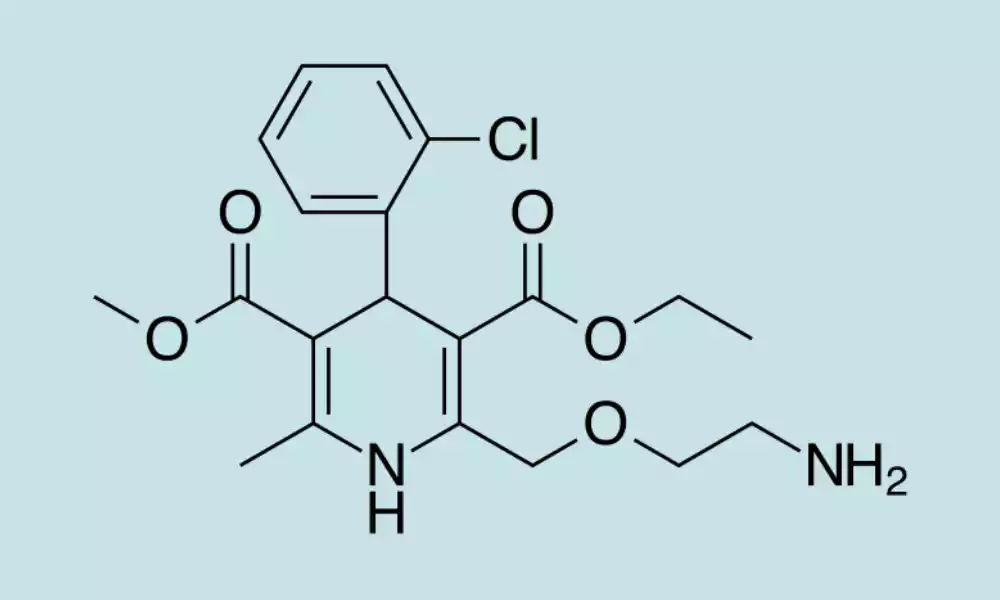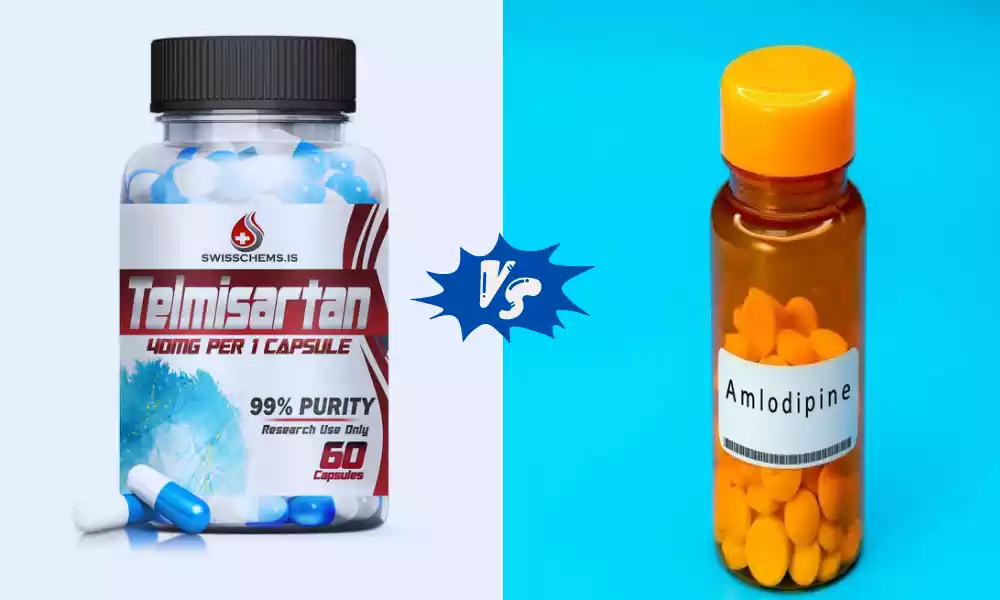Telmisartan and Amlodipine are medications used to manage high blood pressure, also known as hypertension. They work through different mechanisms to lower blood pressure effectively. Explores their roles, benefits, and how they can be combined for optimal results in hypertension treatment.
Definition of Telmisartan

Telmisartan belongs to a class of drugs called angiotensin II receptor blockers (ARBs). It is primarily used to treat high blood pressure (hypertension) and may also be prescribed for certain cardiovascular conditions.
Telmisartan works by blocking the action of angiotensin II, a hormone that narrows blood vessels and raises blood pressure, leading to vasodilation (relaxation of blood vessels) and a reduction in blood pressure.
This medication is typically taken orally in the form of tablets and is available by prescription under various brand names. It is an important tool in the management of hypertension and can also have additional benefits for individuals at risk of certain heart-related conditions.
As with any medication, it should be taken under the supervision of a healthcare professional, and patients should follow their prescribed dosage and instructions carefully.
Definition of Amlodipine

Amlodipine is a medication classified as a calcium channel blocker (CCB) used primarily for the treatment of high blood pressure (hypertension) and certain cardiovascular conditions. Dihydropyridine calcium channel blockers belong to a class of medications called dihydropyridine calcium channel blockers.
Amlodipine works by blocking the entry of calcium into the cells of blood vessel walls and the heart muscle. This action results in the relaxation of blood vessels, which reduces peripheral resistance and lowers blood pressure, making it easier for the heart to pump blood.
Amlodipine is often prescribed as an oral medication, typically in the form of tablets or capsules, and is available by prescription under various brand names. It is commonly used to manage hypertension and can also be part of a treatment plan for other conditions, Angina (chest pain caused by reduced blood flow to the heart), arrhythmias and irregular heartbeats may all pose potential threats.
As with any medication, it should be used under the guidance of a healthcare professional, and patients should adhere to their prescribed dosage and instructions carefully.
The Benefits of Telmisartan and Amlodipine
Here’s a the benefits of both Telmisartan and Amlodipine:
Telmisartan:
- Blood Pressure Control: Effectively lowers high blood pressure, reducing the risk of cardiovascular issues.
- Cardiovascular Protection: Helps protect the heart and blood vessels.
- Kidney Health: Slows kidney damage in hypertension and kidney disease.
- Stroke Prevention: Reduces the risk of ischemic strokes.
- Heart Failure Management: Improves heart function in heart failure patients.
- Diabetes Support: Beneficial for those with diabetes and hypertension.
- Well-Tolerated: Generally has few side effects.
- Convenient Dosage: Available in a once-daily form.
- Affordability: Generic forms are available.
- Personalization: Dosage can be tailored to individual needs.
Amlodipine:
- Blood Pressure Control: Effectively lowers high blood pressure.
- Angina Relief: Helps relieve chest pain by improving heart muscle blood flow.
- Stroke Prevention: Lowers the risk of ischemic strokes.
- Heart Health: Protects the heart from excessive strain.
- Well-Tolerated: Generally has few side effects.
- Convenient Dosage: Available in a once-daily form.
- Affordability: Generic forms are available.
- Personalization: Dosages can be adjusted to individual needs.
Both medications are valuable tools in managing hypertension and related conditions, but their usage should be under the guidance of a healthcare professional.
Dosage and Administration
Here’s the dosage and administration for Telmisartan and Amlodipine:
Telmisartan:
- Typically taken orally once a day.
- Usual starting dose for hypertension: 20-40 mg daily.
- Maximum dose: 80 mg daily.
- Can be taken with or without food.
- Dosage may vary based on individual needs and medical conditions.
Amlodipine:
- Usually taken orally once a day.
- Common starting dose for hypertension: 5 mg daily.
- Maximum dose: 10 mg daily.
- Can be taken with or without food.
- Dosage adjustments are made by a healthcare provider as needed.
Always abide by the dose prescribed and instructions of a health provider when taking medications. Don’t alter them without first consulting with them first.
Comparison table of Telmisartan and Amlodipine
Here’s a comparison table of Telmisartan and Amlodipine:
| Aspect | Telmisartan | Amlodipine |
|---|---|---|
| Medication Class | Angiotensin II Receptor Blocker (ARB) | Calcium Channel Blocker (CCB) |
| Mechanism of Action | Blocks angiotensin II receptors, leading to vasodilation and reduced blood pressure | Blocks calcium channels, causing blood vessel relaxation and reduced blood pressure |
| Indications | Hypertension, heart failure, stroke prevention, kidney protection | Hypertension, angina (chest pain), Raynaud’s phenomenon |
| Common Side Effects | Dizziness, headache, upper respiratory infections, back pain, diarrhea | Swelling (edema), headache, flushing, dizziness, fatigue |
| Administration | Typically taken orally, once daily | Typically taken orally, once daily |
| Maximum Dosage | Often 80 mg daily for hypertension | Usually 10 mg daily for hypertension |
| Combinations | May be used in combination with other antihypertensive drugs | Often used in combination with other antihypertensive drugs |
| Special Considerations | Considered for patients who can’t tolerate ACE inhibitors | Preferred for hypertension with angina symptoms |
| Pregnancy Category | Category C (consult healthcare provider) | Category C (consult healthcare provider) |
| Monitoring | Regular blood pressure monitoring is essential | Regular blood pressure monitoring is essential |
| Common Brand Names | Micardis, Telma | Norvasc, Amlodipine Besylate |
This table provides a general comparison. The choice between Telmisartan and Amlodipine should be made in consultation with a healthcare provider based on individual health needs and considerations.
Similarities of Telmisartan and Amlodipine
Similarities between Telmisartan and Amlodipine:
- Both are medications used to manage high blood pressure (hypertension).
- They are typically administered orally, once daily.
- They can be used in combination with other antihypertensive drugs when necessary.
- Regular blood pressure monitoring is crucial when taking either medication.
- Both should be used under the guidance of a healthcare provider for optimal effectiveness and safety.
Choosing Between Telmisartan and Amlodipine

Choosing between Telmisartan and Amlodipine depends on your specific health condition, preferences, and the guidance of your healthcare provider:
Choose Telmisartan if:
- You have hypertension and want to protect your heart and kidneys.
- You need blood pressure control without affecting heart rate.
- Your healthcare provider recommends an angiotensin II receptor blocker (ARB).
Choose Amlodipine if:
- You have hypertension and want to control blood pressure while easing angina symptoms.
- You’re looking for a calcium channel blocker (CCB) to relax blood vessels.
- Your healthcare provider suggests it as part of your treatment plan.
The choice is personalized and should be made with your healthcare provider’s expertise.
Conclusion
Telmisartan and Amlodipine are distinct medications for managing hypertension and related conditions. Telmisartan is an ARB that primarily controls blood pressure and protects the heart and kidneys, while Amlodipine, a CCB, is effective for blood pressure control and angina relief. The choice depends on individual health needs and should be guided by a healthcare provider’s recommendation.



